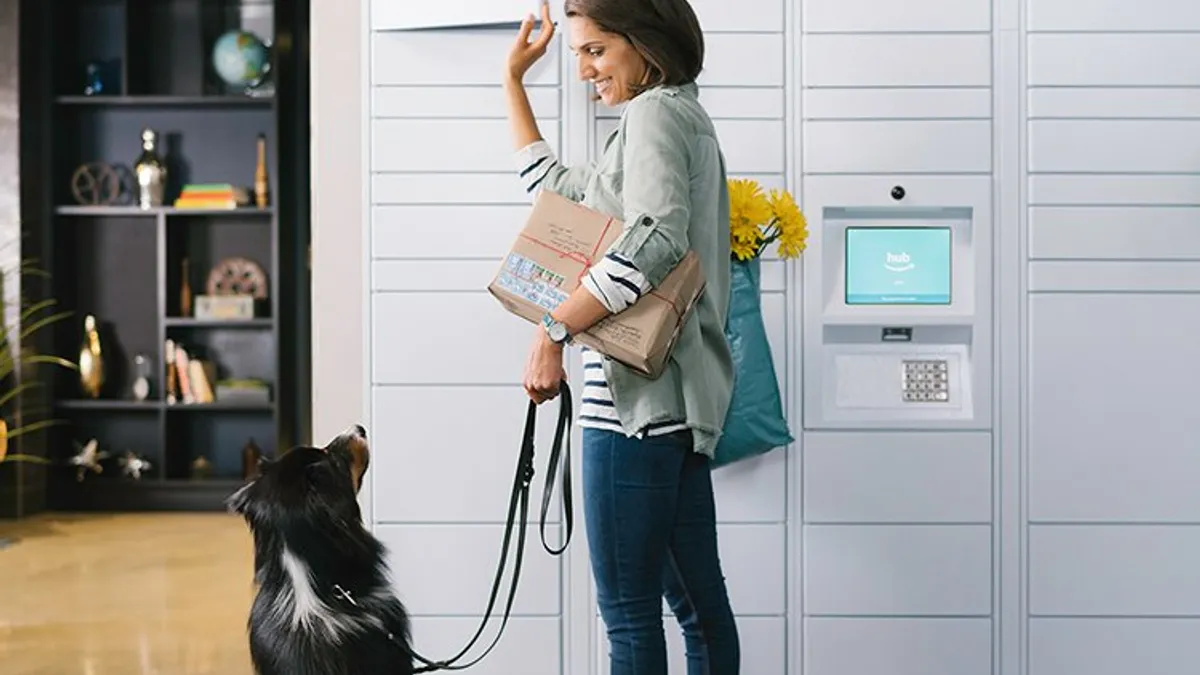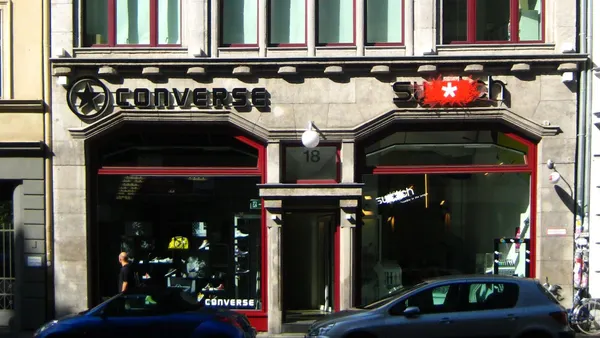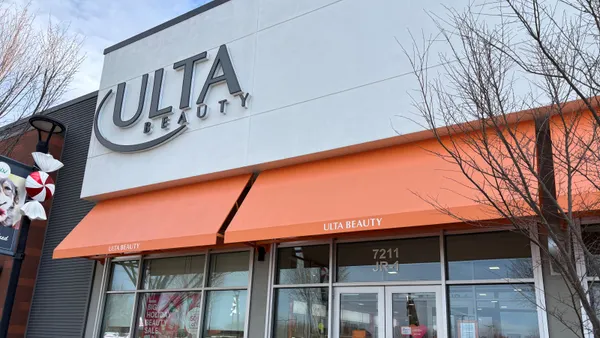Dive Brief:
-
Amazon's Hub delivery locker system, first introduced last year, has expanded to serve more than half a million apartment dwellers in New York, San Francisco and elsewhere, the company said on Tuesday.
-
The lockers are now available to buildings across the U.S. and have been embraced by some of the largest residential property owners and managers in the U.S., including AvalonBay, Fairfield Residential, Pinnacle, J.P. Morgan Asset Management, WinnResidential, and Equity Residential, according to a company press release.
-
The Hub differs from other Amazon locker setups in that it takes packages from any sender, not just Amazon.
Dive Insight:
With the Hub, Amazon is upending not just the last mile, but the last few inches of delivery — yet another challenge to legacy players like United Parcel Service, FedEx and even the Postal Service.
Speculation about Amazon's delivery ambitions have swirled for years now, with some analysts predicting that, beyond solving its own internal logistics problems, it could be an Amazon business unto itself. While shippers, particularly FedEx, have consistently dismissed the notion of Amazon as a threat, experts have told Retail Dive that Amazon's shipping services could indeed rise, much like its cloud services have, to serve third parties.
While Amazon built its Amazon Web Services unit to serve its own needs at first, it developed the platform with outside parties also in mind, and entities like Netflix and the U.S. Central Intelligence Service now use it. By taking other senders' packages, the Hub fits the bill when it comes to last-mile package logistics.
"[T]he Hub addresses frustrations from property owners, carriers and residents concerning package delivery," Patrick Supanc, director of Amazon Worldwide Lockers and Pickup, said in a statement.
The question is whether other retailers will just let that happen, according to Charles Dimov, VP of Marketing for OrderDynamics. "This service solves a glaring shopper challenge. But, will retailers feel comfortable supporting another Amazon initiative?" he said in an email to Retail Dive. "This might be an even greater opportunity for a new last mile player to emerge who doesn't directly compete with other retailers."
Amazon is charging forward regardless. The company continues to plow money into various aspects of its operations, and executives earlier this year said that, while they would continue to partner with third-party shippers for fulfillment, investment into its own shipping operations was necessary and would continue. They also reported that first quarter net sales rose 43% to $51 billion, and that profit came to $1.6 billion, but announced a $20 hike in the annual Prime membership fee in the U.S. While defending Prime membership, even now at $119, as the best deal in retail considering its many perks, Amazon CFO Brian Olsavsky said that all that is expensive.
In April, CEO Jeff Bezos revealed in a letter to shareholders that the company now has more than 100 million paid Prime members globally, a statistic that several analysts had been chasing for years.













